1. Overview of Hai Phong Old Quarter
1.1. Location of Hai Phong Old Quarter
Hai Phong is a vibrant port city of the North, also famous as an attractive tourist destination, welcoming millions of visitors each year. The city is not only blessed with many scenic spots but also possesses a favorable geographical location, serving as an important trading center for the region.
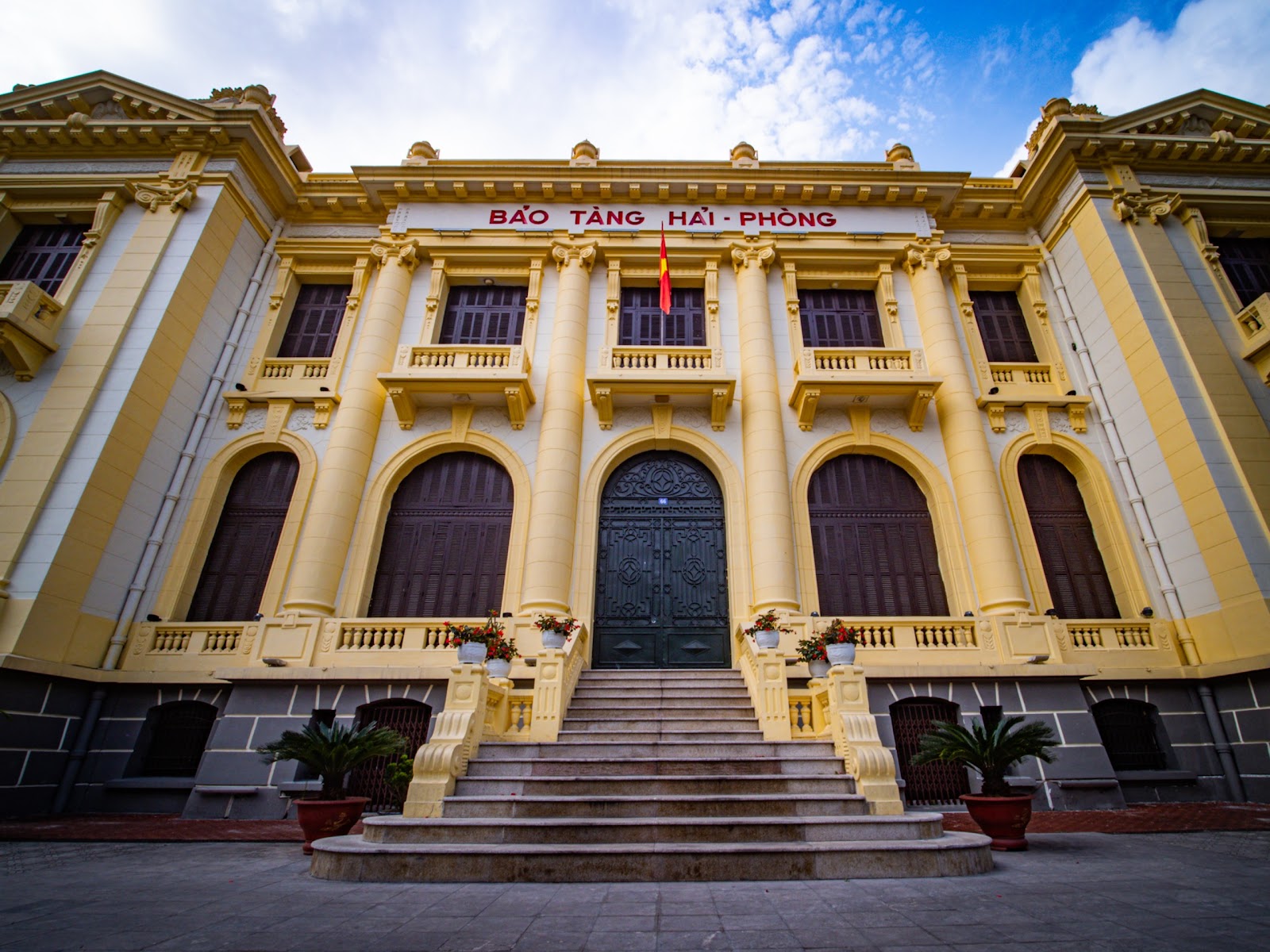
Hai Phong Museum building bears the mark of ancient French architecture. (Source: Collected)
Amidst the rhythm of modern life, Hai Phong still retains its unique beauty through streets and buildings with ancient appearances. Among them, the Hai Phong old quarter is considered a place that preserves the glorious historical memories of the port city and possesses a beauty that blends the ancient and the modern.
The old quarter lies around familiar streets such as Tam Bac, Ly Thuong Kiet, Cau Dat, Hoang Van Thu... Strolling along these streets, visitors will feel the slow, close, and friendly pace of life, a very unique characteristic of the people of the Red Phoenix City.
1.2. History of formation and development of the Hai Phong old quarter
The Hai Phong old quarter was formed in the late 19th century, associated with the period when the French built and planned the port city. At that time, this area became a bustling commercial center, a place for trade of goods and cultural exchange between Asian and European countries.
Streets such as Hoang Van Thu, Ly Thuong Kiet, Phan Boi Chau, and the Tam Bac market area are considered the first "lifelines" of the old Hai Phong city. Here, many houses with classic French architecture were built, contributing to the characteristic appearance of the port city.
Among them, Cau Dat street was once known as the wealthiest street in Hai Phong, a place concentrating many famous handicrafts such as shoemaking, confectionery production, opening eateries, photo studios, or jewelry stores.
Lying reflected by the Tam Bac river, the Tam Bac old quarter is considered one of the most peaceful and oldest quarters in Hai Phong. Following the transformation of time, this quarter has taken on a new appearance but still retains almost intact the old architectural lines, creating a unique imprint in the heart of the modern city.
2. Architecture of the Hai Phong old quarter
2.1. Ancient French architecture is a prominent feature
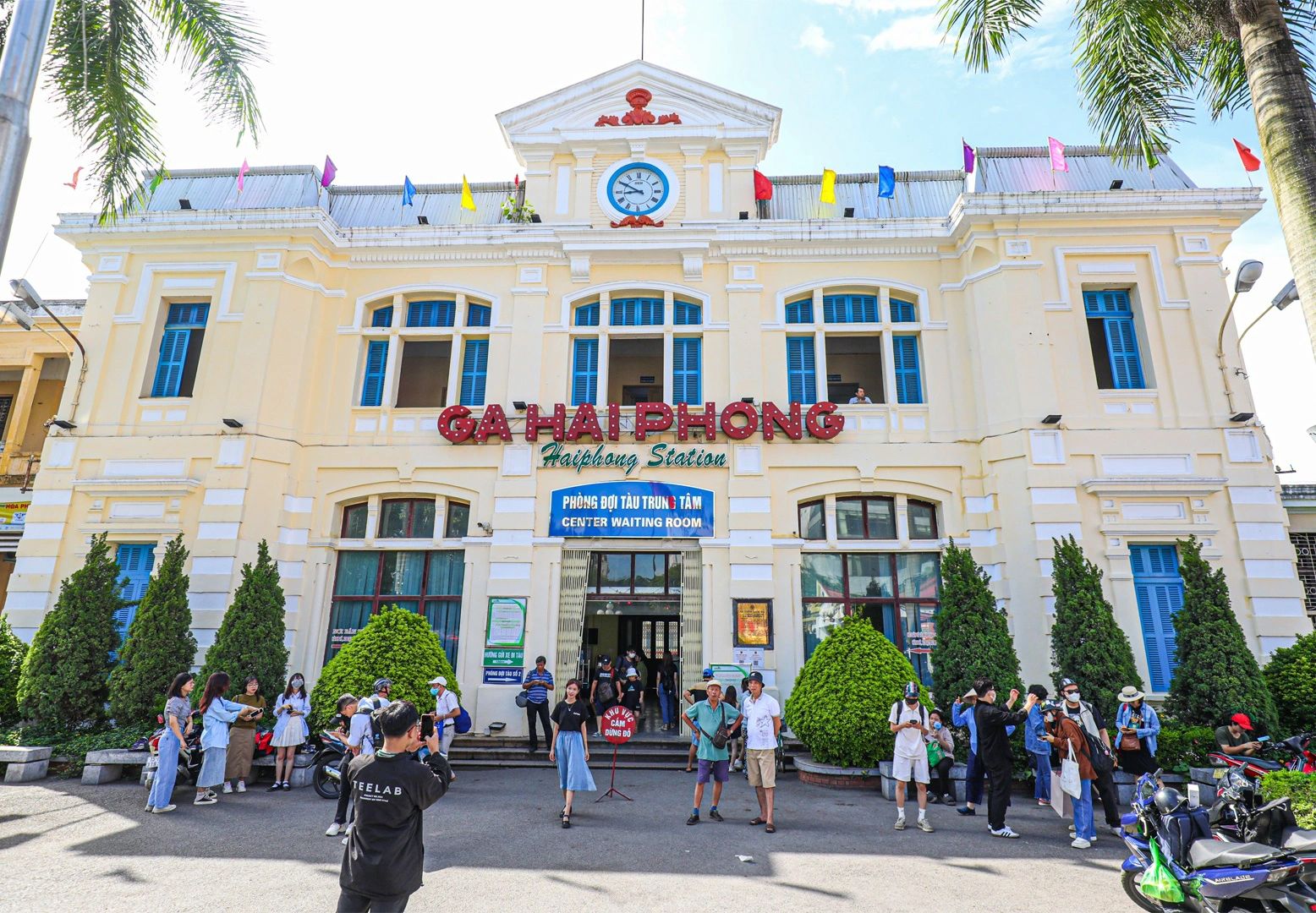
Classic French architecture stands out at Hai Phong station. (Source: Collected)
One of the special imprints of the old town of Hai Phong is the classic French architecture preserved almost intact to this day. The buildings here often have high domes, spacious ceilings, and are decorated with exquisite chandeliers.
The characteristic warm yellow paint, large wooden door frames, and thick, sturdy walls create a luxurious and durable appearance for the buildings. This architecture not only shows aesthetic sophistication but also reflects the imprint of the period when the French planned the port city more than a century ago.
2.2. Architecture blending with modern touches
Through the process of urban development, the architecture of the old town of Hai Phong today is a harmonious combination of classic and modern styles. The buildings still retain symmetrical facades, red tile roofs, winding iron railings, and traditional wooden doors, but are embellished with new details and auxiliary structures to suit modern life.
Along streets like Hoang Van Thu or Phan Boi Chau, you can find newly painted two-story French-style houses, with wooden door frames replaced by large glass windows to utilize natural light. Some cafes and small shops also take advantage of the old architectural base, adding a bit of modern decor such as hanging lamps, green plants, and minimalist signage, creating a feeling that is both ancient and youthful.
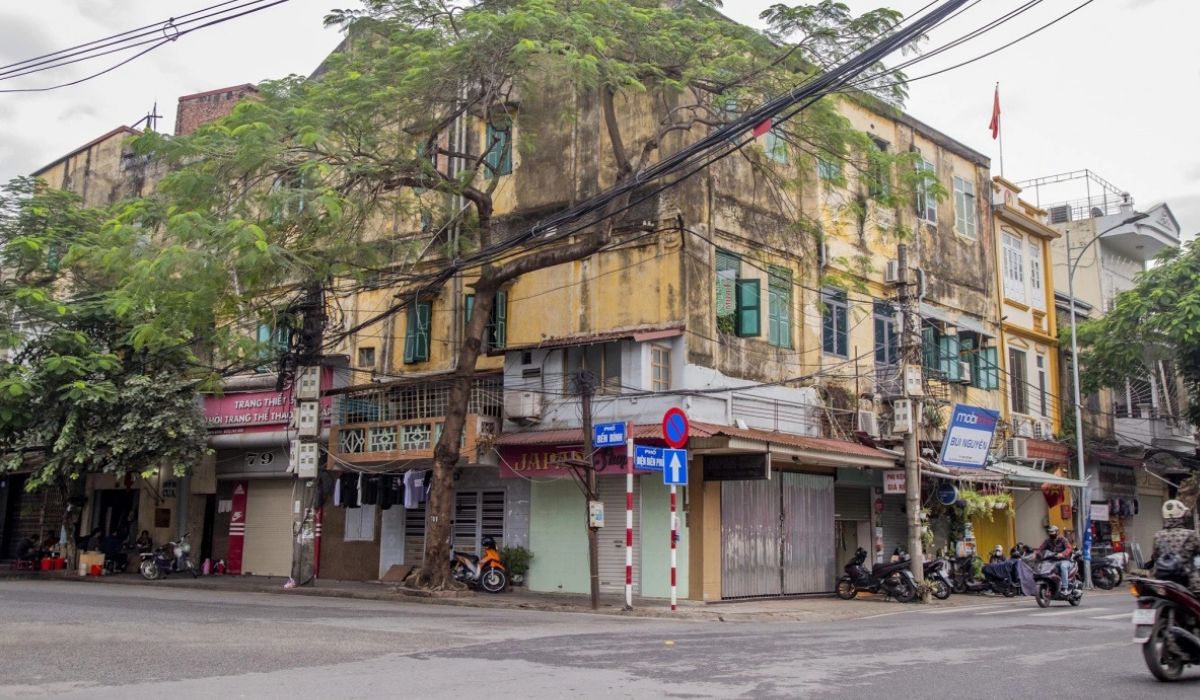
Ancient houses in Hai Phong Old Quarter. (Source: Collected)
3. Iconic landmarks in Hai Phong Old Quarter
3.1. Hai Phong Opera House

Hai Phong Grand Theatre is a famous check-in spot. (Source: Collected)
Address: No. 28 Hoang Van Thu Street, Hong Bang Ward, Hai Phong City.
Hai Phong Grand Theatre was built in the early 20th century, a work with a strong French Neoclassical architectural style. The building stands out with its majestic tall columns, red tiled roof, and exquisitely decorated facade.
Over a hundred years, this place is not only a center for artistic performances but also an iconic destination of the city. On every festival or major event occasion, the square area in front of the theatre is always brightly lit and bustling with people.
3.2. Hai Phong Flower Market
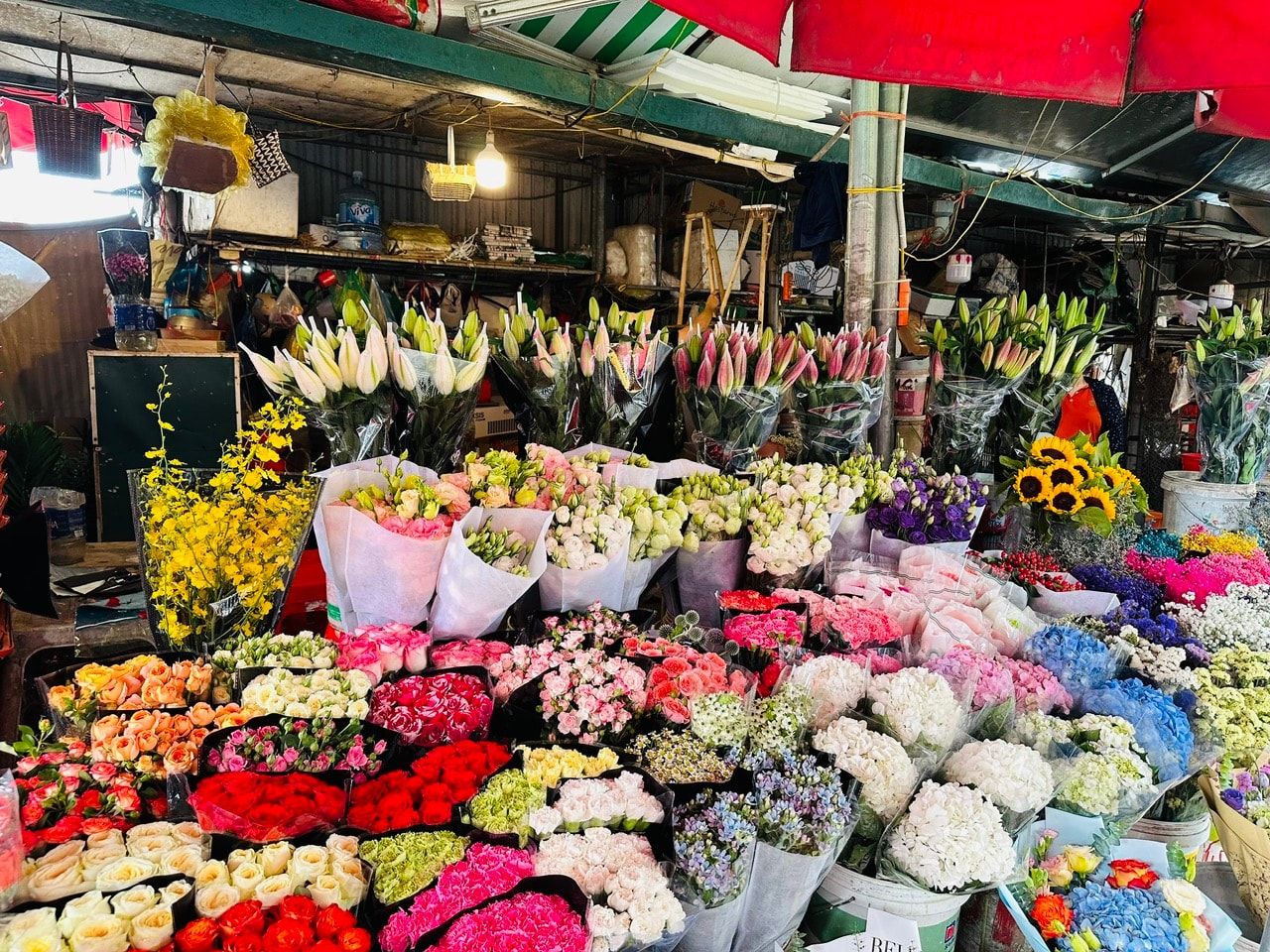
Hai Phong flower market has a long history. (Source: Collected)
Address: Tam Bac Street, Hong Bang Ward, Hai Phong City.
Located right in the heart of the center, Hai Phong flower market is one of the oldest and most famous markets in the city. Here, countless types of flowers are sold, from traditional ones like chrysanthemums, roses, lilies to colorful imported flowers. Every Tet holiday, the market becomes vibrant and bustling, bringing visitors a warm and familiar feeling.
3.3. City Post Office
Address: No. 2 Tran Phu, Hong Bang Ward, Hai Phong City.
Hai Phong City Post Office was built by the French in 1905 and is one of the typical architectural works in the old quarter. The building features a blend of European and East Asian styles, highlighted by its sloping red-tiled roof, symmetrical facade, and a large clock in the center of the building.
Nowadays, besides its function as a postal center, it has also become a familiar check-in spot for locals and tourists. Every holiday season, the area in front of the post office is always bustling with colorful photo opportunities.
3.4. Binh Ship Port
Address: Ben Binh Street, Minh Khai Ward, Hai Phong City.
Binh Ship Port is one of Hai Phong's most important ports, closely associated with trade and goods transportation for decades. It is also the departure point for high-speed boats to Cat Ba Island, one of the most famous tourist destinations in the North.
At Binh Ship Port, visitors can admire the bustling scene of the seaport, feel the fresh air, and admire the panoramic view of the riverside city.
4. Unmissable experiences when visiting Hai Phong's old quarter
4.1. Strolling along the old streets
Strolling through the old streets is a great way to feel the simple rhythm of life of Hai Phong people. Streets like Tam Bac, Hoang Van Thu, Ly Thuong Kiet, Cau Dat, or Phan Boi Chau possess a beauty that is both ancient and romantic, with tree-lined avenues and walls stained by time.
Visitors can stop at cafes with views of old villas such as:
An Tra : 84 Dien Bien Phu, Hong Bang Ward, Hai Phong City
1986 Cafe and Stay: 35 Dinh Tien Hoang, Hong Bang Ward, Hai Phong City
Universal Cafe: 464 Lach Tray Street, Ngo Quyen Ward, Hai Phong City
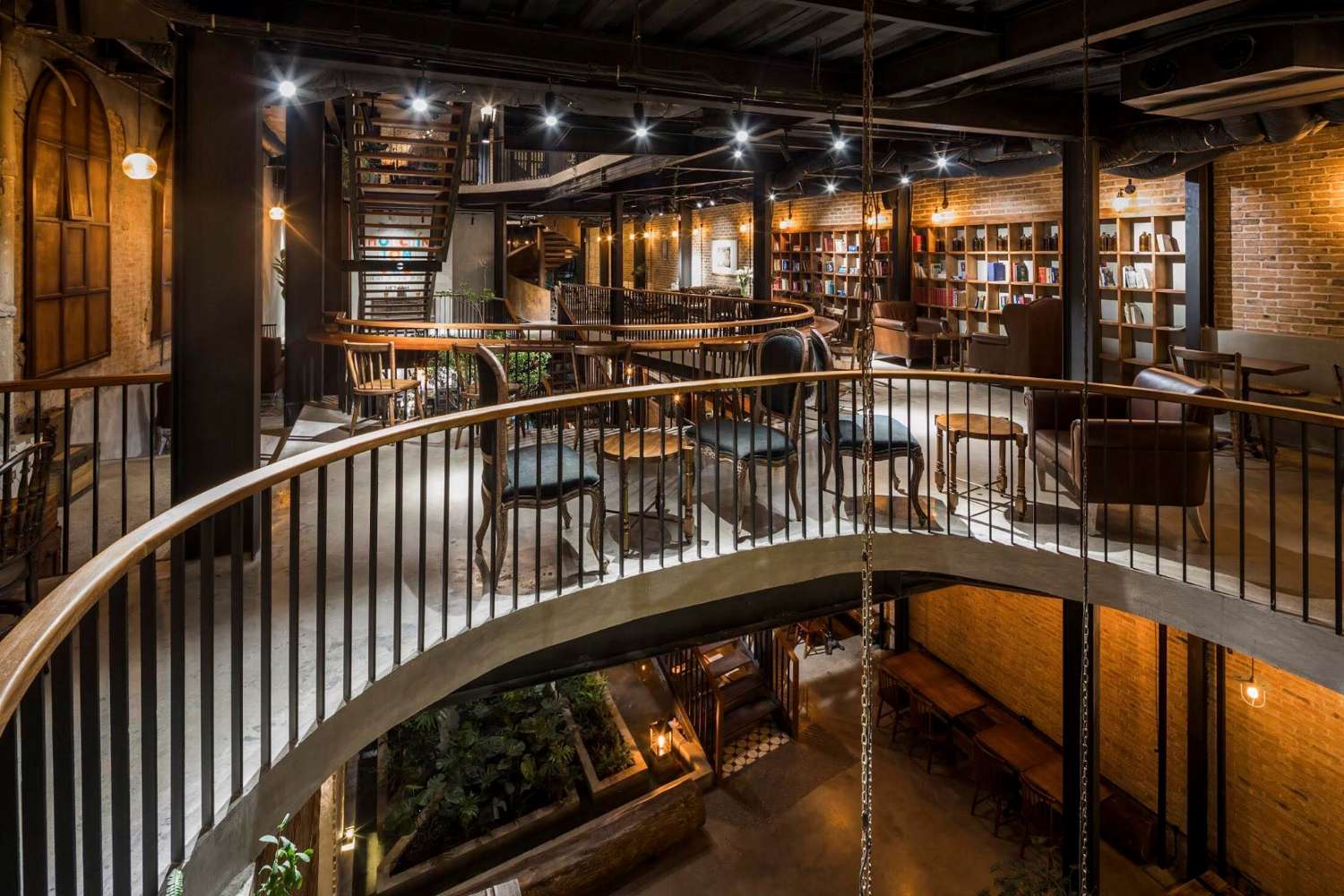
Visitors can relax in a cafe and admire the ancient town. (Source: Collection)
4.2. Check-in at famous landmarks
When you come to Hai Phong ancient town, don't forget to capture beautiful souvenir photos next to architectural works bearing the imprint of time. Hai Phong Opera House, City Post Office, Tam Bac Flower Market, or Binh Ferry Terminal are all outstanding check-in spots, helping you get classic yet modern frames.
4.3. Experience ancient town cuisine
4.3.1. Crab noodle soup
Crab noodle soup is a famous specialty dish that any tourist visiting Hai Phong should try. The dish is prepared from chewy red noodles, fresh river crab, grilled pork sausage wrapped in piper lolot leaves, fish cake, meatball cake, shrimp, fried shallots, and many aromatic herbs.
Suggested delicious dining spots for tourists:
Ba Cu Crab Noodle Soup Shop: 179 Cau Dat, Ngo Quyen Ward, Hai Phong City
Lam Son Crab Noodle Soup Shop: 135 Lam Son, Le Chan Ward, Hai Phong City.
Huyen Trang Crab Noodle Soup Shop: 139 Thien Loi Street, Le Chan Ward, Hai Phong City
4.3.2. Crab spring rolls

Nem cua be are a famous specialty dish of the Hai Phong Old Quarter. (Source: Collected)
Hai Phong crab spring rolls have a distinctive square shape, skillfully wrapped with a filling consisting of crab meat, shrimp, glass noodles, wood ear mushrooms, minced pork, and various spices. When fried golden, the rolls emit an attractive aroma, crispy on the outside yet tender and sweet on the inside.
Suggested delicious dining spots for tourists:
Thuan Yen Crab Spring Roll Eatery: 88 Tran Nhat Duat, Ngo Quyen, Hai Phong City
Ba Cu Crab Spring Rolls: 174 Cau Dat, Ngo Quyen Ward, Hai Phong City
To Hieu Crab Spring Rolls: 323 To Hieu, Le Chan Ward, Hai Phong City
4.3.3. Cha ca La Vong
Although originating from Hanoi, the Cha ca La Vong dish is still loved by Hai Phong people and adapted to local tastes. Fresh catfish is cut into bite-sized pieces, marinated with turmeric and spices, then lightly grilled before being pan-fried with dill and green onions.
Suggested delicious dining spots for tourists:
Cha ca La Vong: 31 Tran Quang Khai, Hong Bang Ward, Hai Phong City
Dung Thang Cha Ca Eatery: 12 Ly Thuong Kiet, Hong Bang Ward, Hai Phong City
Lao Ngu Cha Ca: 40 Phan Boi Chau, Hong Bang Ward, Hai Phong City
4.3. Explore street art and festivals in the Old Quarter
The Hai Phong Old Quarter is not only a place that preserves ancient architectural imprints but also a venue for many vibrant cultural and artistic activities of the city. Here, special events are frequently held, such as: the Red Flamboyant Festival (Le hoi Hoa Phuong Do), Hai Phong Book Street (Duong Sach Hai Phong), along with many street art programs, art exhibitions, and outdoor music performances…
Especially, during the recent 70th anniversary of Hai Phong Liberation Day, the Old Quarter became more splendid than ever with spaces decorated with flags, flowers, and lights.
5. Suggested Hai Phong 2-day 1-night travel itinerary
Day 1: Explore Hai Phong City center and Cat Ba Island
Morning:
Tourists begin their journey by strolling around the Hai Phong Old Quarter – a place that preserves ancient French architectural features intertwined with the vibrant atmosphere of a port city. Don't forget to check in at the Hai Phong Opera House (Nha hat Lon Hai Phong), this is one of the iconic structures of the red flamboyant city.
After that, tourists stop to enjoy breakfast with banh da cua, a famous specialty dish of the red flamboyant city.
Afternoon:
From Hai Phong center, you will travel to the Cat Hai cable car station (ga cap treo Cat Hai) to reach Cat Ba Island. The approximately 15-minute journey on the Sun World Cat Ba cable car will allow tourists to admire the entire Cat Ba archipelago with its clear blue waters and majestic limestone islands.

The modern 3-wire cable car system allows tourists to fully admire the island and sea scenery. (Source: Collected)
Upon arrival, tourists check into their hotel and rest after a day of travel. Afterwards, tourists can head to Cat Co beach to immerse themselves in the clear blue sea water, walk on the fine sand, and listen to the gentle sound of the waves.
Evening:
A must-visit spot when coming to Cat Ba is the night market, which features hundreds of diverse stalls, from seafood to souvenir shops. The Cat Ba night market space is always bustling, vibrant with lights and lively music.
Tourists can enjoy the night market's cuisine, then buy gifts for loved ones after the trip. Famous Cat Ba specialties such as: Cat Hai fish sauce, squid cake, dried shrimp, wild honey... are small but meaningful gifts.
Day 2: Visit Lan Ha Bay and admire the scenery from the Cannon Fort
Morning:
Board a boat to explore Lan Ha Bay – the green jewel of Cat Ba, with hundreds of large and small islands, crystal-clear water, and a peaceful natural landscape. Tourists can kayak or visit ancient fishing villages to experience the life of local fishermen.

Lan Ha Bay with majestic scenery. (Source: Collected)
Adventurous travelers can move to Than Cong Fortress, the best spot to admire the panoramic view of Cat Ba Island and Lan Ha Bay. Here, visitors can explore historical relics, watch the sunset over the sea, and fully enjoy the beauty of the pearl island before returning to the mainland.
Noon:
Guests return to the hotel, have a light lunch, pack their luggage, and check out. This concludes a meaningful 2-day, 1-night journey in Hai Phong – a place that converges the beauty of sea and islands, ancient culture, and hospitable people.
The Hai Phong Old Quarter is not only a place that marks a golden era of Vietnamese architecture and trading ports but also the soul of the city, where every brick, every archway holds the breath of time. Strolling along streets shaded by red flamboyant trees, sipping coffee by the veranda of a French villa, you will clearly feel the peaceful yet sophisticated rhythm of a heritage urban area. Let the Hai Phong Old Quarter be the first stop on your journey to explore the port city.



